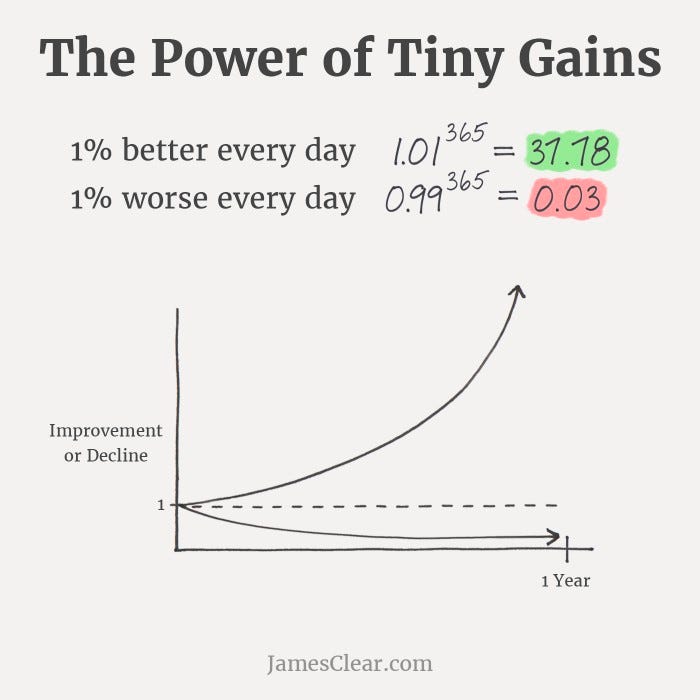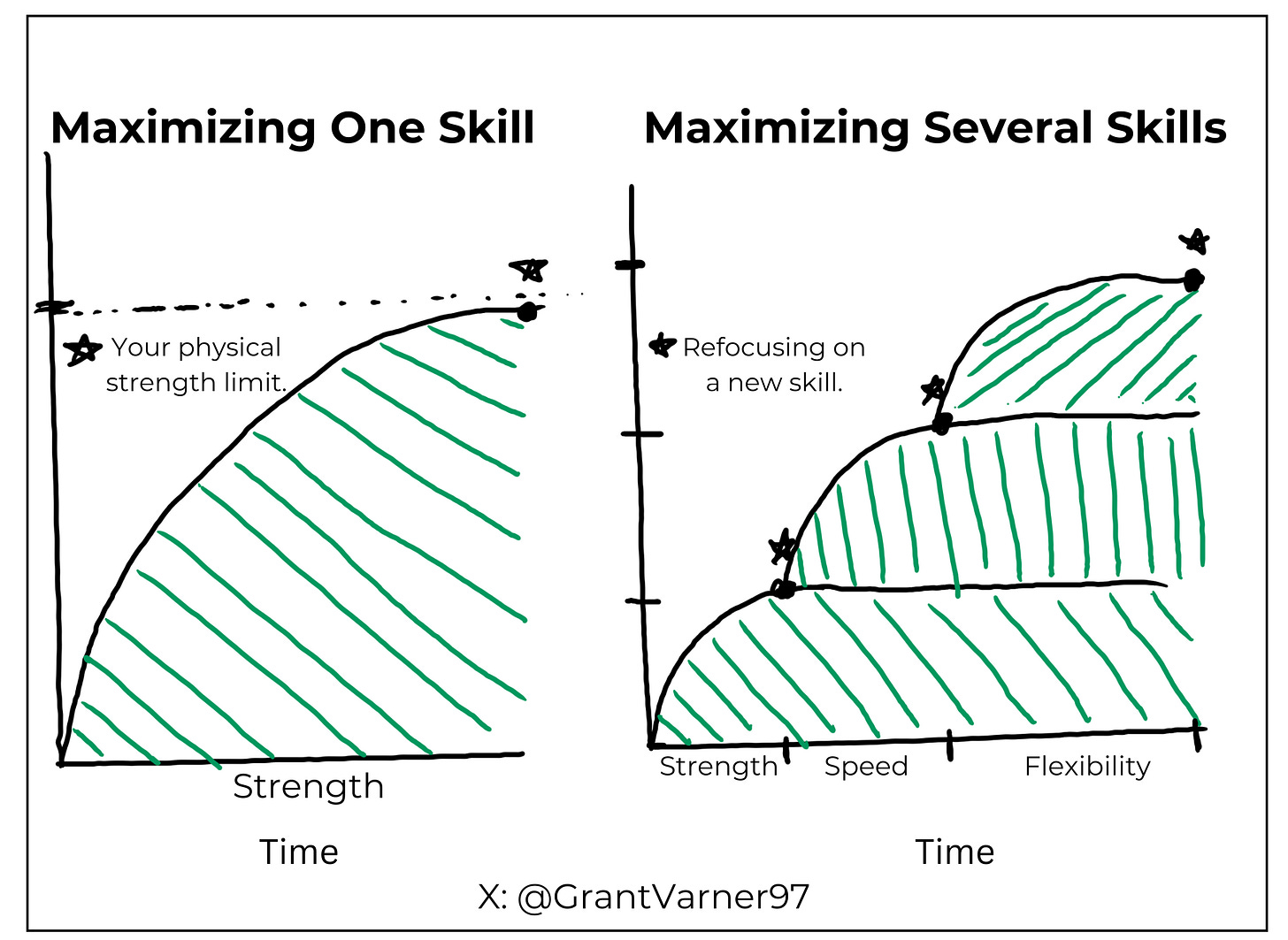
Trouble At The Bench Press
I got under the bench press. I looked to my left and my right and got my hands in position on the bar.
I gave my spotters the countdown: “3… 2… 1…” took a big gulp of air and lifted the weight off the squat rack.
80 other football players were hollering and banging their chests as I slowly lowered the weight.
Snap!
My legs flared out from the bench press. 3 teammates—my spotters—lifted 405 lbs off of me.
I tore my pectoral.
You could hear a pin drop in the weight room.
Since that moment, I’ve never gotten anywhere close to benching 405 lbs again.
Clearly I’d hit a maximum capacity for what my body is capable of doing. I reached my maximum capacity or growth in the bench press.
Is it possible to always be improving? Or do we naturally reach a limit, no matter what we're doing?
There are different ways to think of continuous improvement: Compounded growth, asymptotes, and s-curves.
Compounded Growth
Compounded growth is the most simple to understand. If you make progress every day, the growth from previous days will stack exponentially.
This applies to building wealth (assuming you don’t invest in things that cause you to lose money), habit formation, and self-mastery.
One popular example of this is in James Clear’s Atomic Habits. The idea that if you can make a 1% improvement every day for a year, you will be in an unrecognizably better place than you were if you’d done nothing for a year.1
Compounding growth applies to many situations, but where I struggle with this framework is situations where there is typically a limit to the amount of growth you can achieve in a particular area—like feats of strength.
Asymptotic Growth
Asymptotic growth refers to the mathematical term of asymptotes, or lines that approach a specific point into infinity, continuously getting closer without ever reaching it.
I’ve always thought of weight lifting as asymptotic. Unless you’re a professional weight lifter, most people reach a relative limit to how much you can bench press. Another great example is the concept of moral perfection in Christianity. Only Jesus is morally perfect. While we can seek to grow in our virtues, we will never become perfect. We can only strive for perfection, but we’ll always fall short due to our fallen nature.
The upside to all of this is that while we eventually reach a maximum in a specific area, like bench press, we can always find a new area to improve. Flexibility for example. In always identifying new areas to improve once we’ve “topped out”, we can keep progressing towards a better version of you.
Asymptotic and compounded growth still doesn’t capture every kind of continuous growth a person can achieve.
S-Curve
The third kind of personal compounded growth I’ve observed is typically in building expertise in broad subject matter. When I worked at Oracle, I was expected to become an expert in Marketing Cloud technology, despite not knowing a thing about digital marketing. My manager put me on a training plan where I’d incrementally learn one thing, become an expert, then move onto another area.
The path to expertise was challenging initially and progress came slow. Then something clicked and it became easy. Once I had mastered B2B email marketing enough to convincingly sell it to the C-Suite of F500 companies, my manager had me shift to a new area.
Each shift into a new area was humbling. I was once an expert that everybody looked to for answers. Then all of a sudden I became the one asking others for answers. Each subsequent domain was harder to master the more I clung onto my ego and the wins that I'd had previously. It was only when I completely adopted a beginner’s mindset that my improvement would take off, and I’d eventually master that domain. Only to find myself back at the bottom once again.
Key Points
In compound growth domains, focus on getting 1% better every day, and not getting worse. Over time, the results will come.
In asymptotic growth domains, focus on improvement until your limit, then finding related areas to grow. Hit your max in bench press? Work on flexibility next.
In S-Curve growth domains, you need to consistently focus on becoming an expert, followed by dropping your ego, and readopting a beginners mindset to continue progressing.
—Grant Varner
https://jamesclear.com/continuous-improvement















